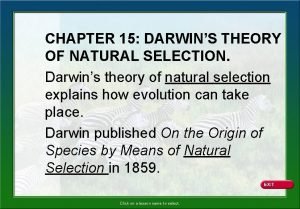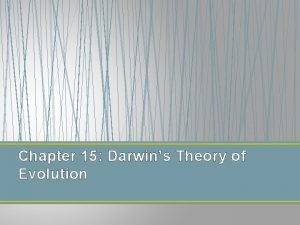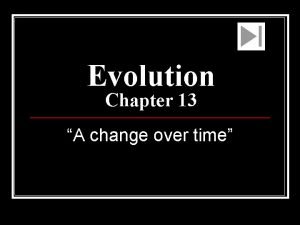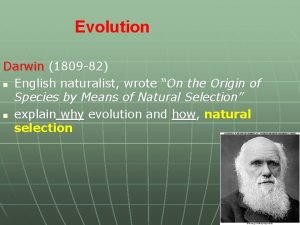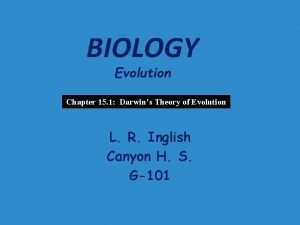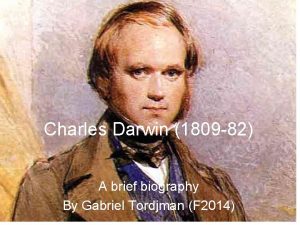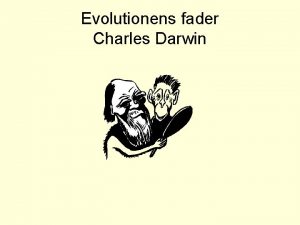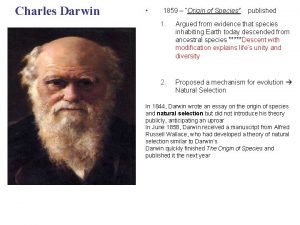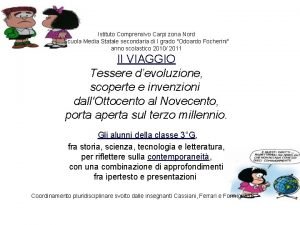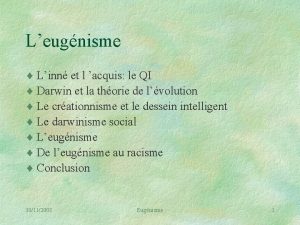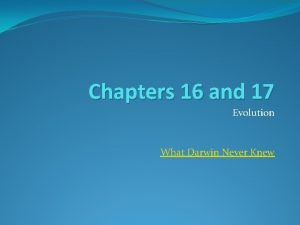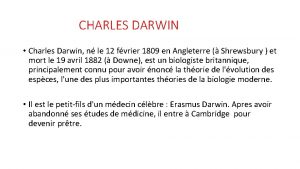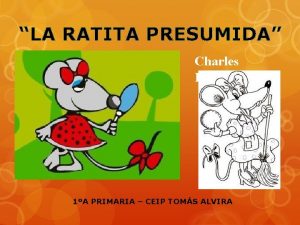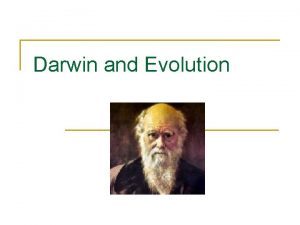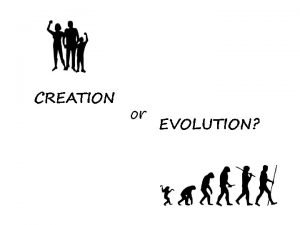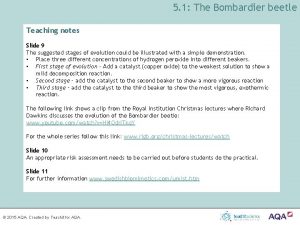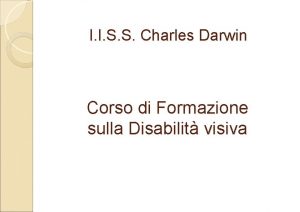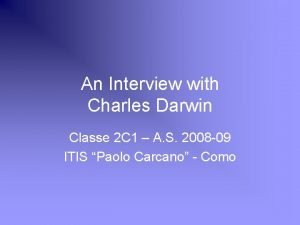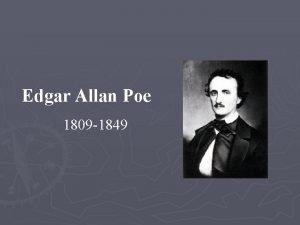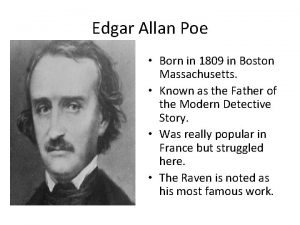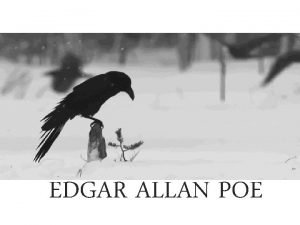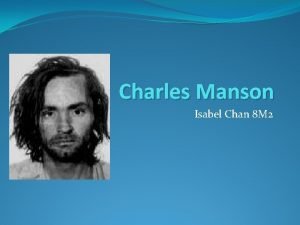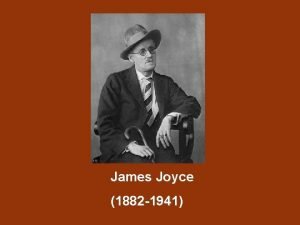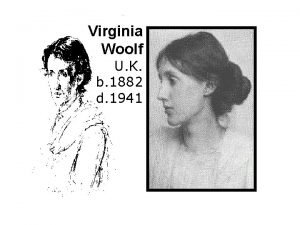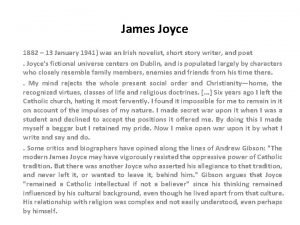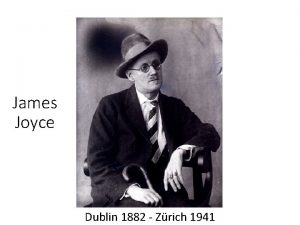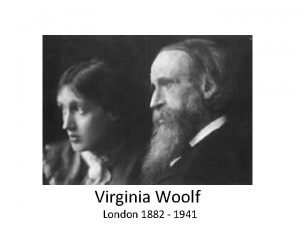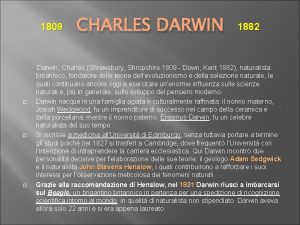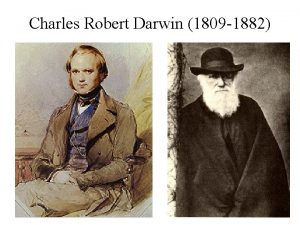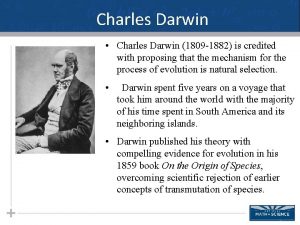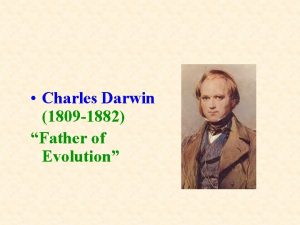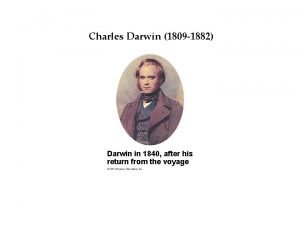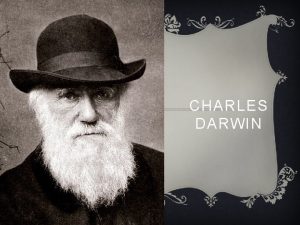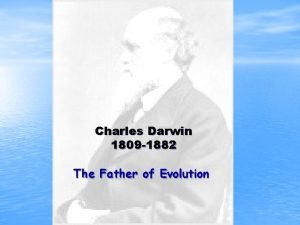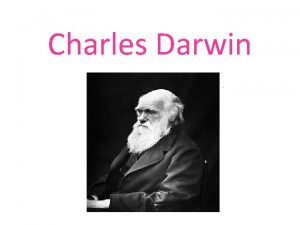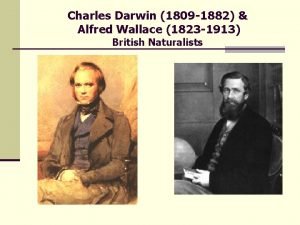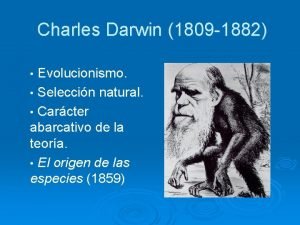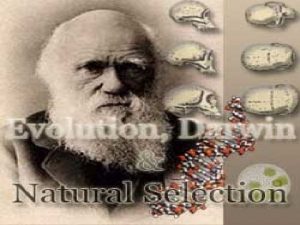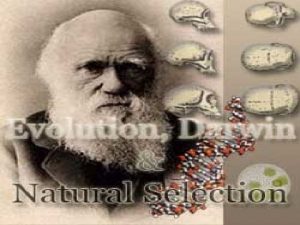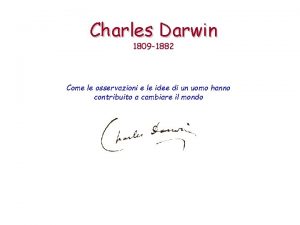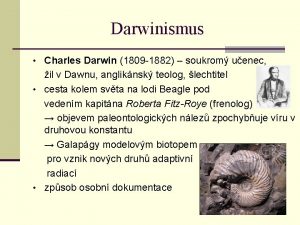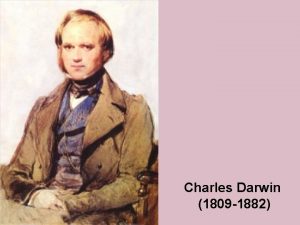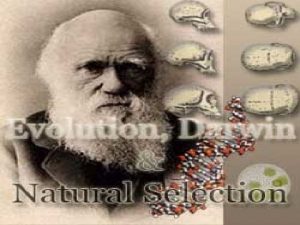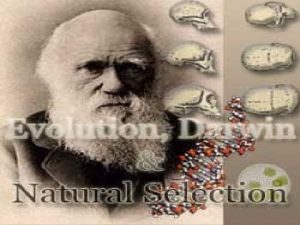Evolution Charles Darwin 1809 1882 served on the
















































- Slides: 48

Evolution

Charles Darwin (1809 – 1882) �served on the HMS Beagle that sailed on a 5 year expedition �his job was to collect, study, and store biological specimens

Charles Darwin ◦ one of the locations was the Galapagos Islands, west of South America

Charles Darwin �Darwin collected many species of finch �he hypothesized that a few birds migrated from the mainland adapted to the different island environments

Ideas that Shaped Darwin’s Thinking 1. Hutton and Lyell ◦ came up with the idea of gradualism, which explains how it took long periods of time to produce geographical features

Ideas that Shaped Darwin 2. Jean Baptiste Lamarck ◦ one of the first scientists to recognize that living things have changed over time

Lamarck’s theory for evolution 1. 2. 3. all organisms continually change in order to reach perfection organisms can alter their bodies by the principle of use and disuse he claimed that acquired characteristics could be inherited

Ideas that Shaped Darwin 3. Thomas Malthus ◦ he stated in his essay The Principle of Population that if the human population continued to grow, sooner or later there would not be enough resources for everyone

Ideas that Shaped Darwin 4. Artificial selection (please add) ◦ Darwin observed how humans could change organisms by selection of specific traits

Darwin’s Theory for Evolution �Darwin was forced to publish when another scientist, Alfred Wallace, came up with a similar idea �Darwin’s book, Origin of Species, stirred up controversy for the next decade


Darwin’s Theory for Evolution Natural Selection 1. not all individuals survive when competing for resources (“struggle for existence”)

Darwin’s Theory for Evolution 2. the individuals who survive are best adapted to their environment (“survival of the fittest”) ◦ nature acts on the variation within a population

Darwin’s Theory for Evolution 3. after many generations, the population may change to resemble the best adapted individuals (“descent with modification”)

Natural selection in insecticideresistant bugs

Evidence for Evolution

Evidence for Evolution 1. Fossils ◦ there should be intermediate stages found in the fossil record


Evidence for Evolution 2. Anatomy ◦ homologous structures are modified structures that show common ancestry same on inside, different on outside

Evidence for Evolution ◦ analogous structures are different in arrangement but have a similar function different on inside, same on outside

Evidence for Evolution ◦ vestigial structures have no current purpose, but may have functioned in an ancestor

Evidence for Evolution 3. Embryology ◦ similarities in embryo structure suggest evolution from a common ancestor

Evidence for Evolution 4. Biochemistry ◦ DNA or amino acid sequences can be compared to see how closely related 2 species are

Blending Butterflies

Examples of Adaptations �Concealing coloration.

Examples of Adaptations �Disruptive Coloration

Examples of Adaptations �Disguises

Examples of Adaptations �Counter shading

Examples of Adaptations �Mimicry

Create your own hidden butterfly! �Select one type of camouflage. �Color/shade it just right. �Place it in it’s habitat!

How Populations Evolve

Evolution of Populations �variation is the inheritable differences within the same species �the gene pool is all of the genes present in a population �changes in the frequencies of alleles is microevolution a population is the smallest unit that can evolve

Finding allele frequencies ◦

Sources of Genetic Variation 1. mutation DNA 2. genetic - a permanent change in drift – chance events can change the gene pools of small populations

Sources of Genetic Variation 3. migration of individuals into and/or out of a population can change allele frequencies 4. non-random mating (similar to selective breeding; only certain traits are desired) 5. natural selection

3 Patterns of Natural Selection 1. stabilizing selection ◦ favors average individuals in a population

3 Patterns of Natural Selection 2. directional selection ◦ favors one of the extreme forms of a trait

3 Patterns of Natural Selection 3. disruptive selection ◦ individuals of both extreme forms are favored over the average

Speciation - a species is a group of organisms that can interbreed and produce fertile offspring Geographic isolation ◦ a physical barrier separates a population into groups (organisms adapt to their isolated environment) 1.

Geographic isolation

Speciation Reproductive Isolation ◦ Occurs when organisms are prevented from producing fertile offspring � occurs when mating behaviors/ 2. times/seasons don’t match � occurs when genetics aren’t similar enough

Various Patterns for Evolution

Rates of Speciation �mass extinctions have wiped out a large number of Earth’s history Following these mass extinctions new species arise

Rates of Speciation 1. Darwin proposed that evolution was a slow, steady process �small adaptive changes accumulate over time �this idea is known as gradualism

Rates of Speciation 2. punctuated equilibrium states that speciation occurs in relatively quick bursts ◦ The bursts of change are then followed by long periods of stability

Patterns of Macroevolution divergent evolution is the pattern of evolution in which many different species can be traced back to a common (same) ancestor ◦ the different species adapted to different environments ◦ this is also called adaptive radiation 1.

Divergent Evolution often happens among island chains because there are different habitats

Patterns of Macroevolution 2. convergent evolution occurs when distantly related organisms evolve similar traits
 Explain the theory of evolution
Explain the theory of evolution Chapter 15 darwin's theory of evolution section 15-1
Chapter 15 darwin's theory of evolution section 15-1 Natural selection
Natural selection Chapter 17 darwin's theory of evolution
Chapter 17 darwin's theory of evolution Examples of homologous structures
Examples of homologous structures Chapter 15 darwin's theory of evolution section review 15-1
Chapter 15 darwin's theory of evolution section review 15-1 Endosymbiont theory
Endosymbiont theory Darwin and evolution
Darwin and evolution Chapter 15 darwin's theory of evolution section 15-1
Chapter 15 darwin's theory of evolution section 15-1 Charles darwin notes
Charles darwin notes Evolutionens fader
Evolutionens fader Origin of species by charles darwin
Origin of species by charles darwin Origin
Origin Charles darwin origine della specie
Charles darwin origine della specie Qi de darwin
Qi de darwin Definition of chronemics
Definition of chronemics Worldview academy
Worldview academy Charles darwin
Charles darwin Charles darwin vikidia
Charles darwin vikidia Charles darwin origine della specie
Charles darwin origine della specie Dialogo de la ratita presumida
Dialogo de la ratita presumida Charles darwin
Charles darwin Where was charles darwin born
Where was charles darwin born Bombardier beetle life cycle
Bombardier beetle life cycle Where was charles darwin born
Where was charles darwin born Iiss darwin
Iiss darwin Darwism
Darwism Spatial intelligence celebrities
Spatial intelligence celebrities Lamarck vs darwin
Lamarck vs darwin 1849-1809
1849-1809 Boston 1809
Boston 1809 1836-1809
1836-1809 1809-1732
1809-1732 Poet laureate 1809 1892
Poet laureate 1809 1892 January 19 1809
January 19 1809 It is a habitual and firm disposition to do the good.
It is a habitual and firm disposition to do the good. When was edgar allan poe born
When was edgar allan poe born Charles manson childhood
Charles manson childhood 1941-1882
1941-1882 Introducing james joyce
Introducing james joyce 1941-1882
1941-1882 1941-1882
1941-1882 1817-1882
1817-1882 Arany jános gyermekkora
Arany jános gyermekkora 1941-1882
1941-1882 Loi du 28 mars 1882
Loi du 28 mars 1882 1941-1882
1941-1882 1941-1882
1941-1882 1941-1882
1941-1882


